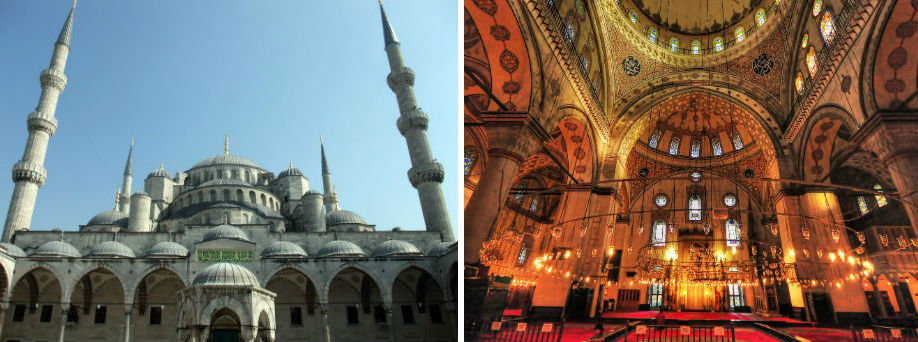
Istanbul, a city steeped in history, is home to many architectural marvels. One such gem is the Beyazıt Mosque.
This mosque, located in the heart of Istanbul, is a testament to the city’s rich cultural heritage. It stands as a symbol of the city’s past, present, and future.
The Beyazıt Mosque is not just a place of worship. It’s a historical landmark, an architectural masterpiece, and a cultural icon.
Built in the early 16th century, the mosque is a fine example of early Ottoman architecture. Its design, influenced by both Byzantine and Ottoman elements, has left a lasting impact on the architectural landscape of Istanbul.
The mosque’s location, near the bustling Beyazıt Square and the Grand Bazaar, makes it a must-visit for any traveler. It offers a unique blend of tranquility and vibrancy, a reflection of Istanbul itself.
This guide aims to provide you with all the information you need to explore the Beyazıt Mosque. From its historical significance to its architectural features, from practical tips for visitors to insights into its cultural role, we’ve got you covered.
So, whether you’re a history enthusiast, an architecture aficionado, or a cultural explorer, this guide is for you. Let’s embark on a journey to discover the Beyazıt Mosque, a treasure of Istanbul.
Table of Contents
- The Historical Significance of Beyazıt Mosque
- Architectural Marvel: Exploring the Design of Beyazıt Mosque
- Beyazıt Mosque’s Cultural and Religious Role in Istanbul
- A Journey Through Time: The Mosque’s Restoration and Preservation
- Beyazıt Square: The Heartbeat of Istanbul’s Historic Peninsula
- The Grand Bazaar: A Stone’s Throw from Beyazıt Mosque
- Practical Information for Visitors: Timings, Dress Code, and Etiquette
- Experiencing the Serenity: Inside the Prayer Hall of Beyazıt Mosque
- The Beyazıt Mosque Complex: More Than Just a Place of Worship
- Beyazıt Mosque in Photos: Capturing the Essence of Istanbul’s Heritage
- Nearby Attractions: Making the Most of Your Visit to Beyazıt Mosque
- Tips for Travelers: Best Times to Visit and How to Get There
- Reflections and Insights: Visitor Experiences at Beyazıt Mosque
- Conclusion: The Enduring Legacy of Beyazıt Mosque
- FAQs
The Historical Significance of Beyazıt Mosque
Commissioned by Sultan Bayezid II in the late 15th century, the Beyazıt Mosque holds immense historical value. Completed in 1506, it marked the beginning of a new era in Ottoman architecture.
The mosque’s location on the historic peninsula of Istanbul underscores its significance. This area, rich in historical sites, has witnessed countless significant events over the centuries.
Standing near Beyazıt Square, the mosque is intertwined with the rich tapestry of Istanbul’s history. The square, once the site of the Byzantine Forum of Theodosius, adds layers of historical depth to the mosque’s backdrop.
As the second imperial mosque built in Istanbul after the conquest, Beyazıt Mosque holds a special place in the city’s architectural timeline. It is an important testament to Ottoman architectural ingenuity and religious devotion.
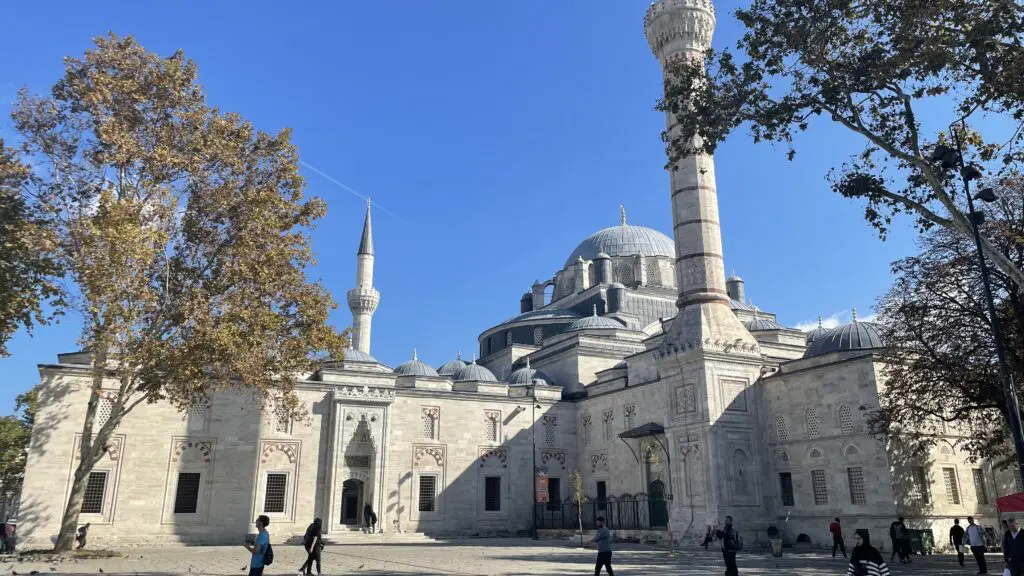
Throughout its history, Beyazıt Mosque has endured numerous challenges. Earthquakes have damaged it several times, prompting restorations to preserve its grandeur and architectural integrity.
Today, the mosque continues to be a significant religious and cultural landmark. It stands resilient, embodying the historical resilience of Istanbul itself and serving as a bridge between past and present.
Each visit to Beyazıt Mosque is a journey through time. It’s a chance to witness firsthand the unfolding history embedded in the very stones and structure of this magnificent mosque.
Architectural Marvel: Exploring the Design of Beyazıt Mosque
Beyazıt Mosque stands as a stunning example of early Ottoman architecture. Its design reflects both grandeur and elegance, characteristic of the era. Built by architect Yakubşah bin Sultanşah, this mosque showcases a blend of Byzantine and Ottoman elements that would influence later structures.
The mosque’s dome is a striking feature. Measuring an impressive 16.78 meters in diameter, it is a testament to the sophistication of Ottoman engineering. The dome is supported by semi-domes, forming a cascading effect that draws the eye upward.
Inside, the mosque is adorned with intricate Iznik tiles. These tiles, famous for their vivid colors and delicate patterns, enhance the mosque’s aesthetic appeal. The play of light across these surfaces adds a dynamic visual experience for visitors.
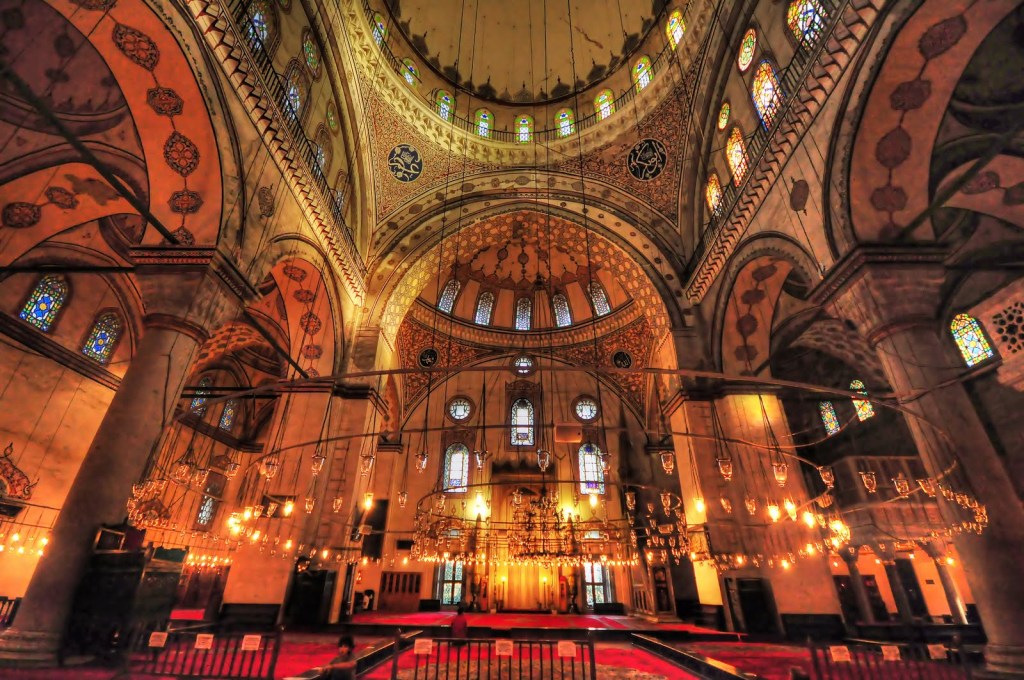
A colonnaded peristyle surrounds the courtyard, providing a peaceful retreat from the city’s hustle. This space exemplifies the harmonious proportions that are a hallmark of Ottoman design. It invites contemplation and relaxation amidst its serene atmosphere.
The minaret, with its single balcony, is another architecturally noteworthy element. It serves not only as a visual landmark but also as a functional one, marking the mosque’s presence in the cityscape. Its design and craftsmanship highlight the architectural ambition of its time.
Furthermore, the mosque incorporates large windows that allow ample natural light into the prayer hall. This thoughtful design choice enhances the spiritual experience within, casting natural illumination over the intricate interior features. Such details reflect the mosque’s architectural brilliance and stand as a testament to its enduring legacy.
Beyazıt Mosque’s Cultural and Religious Role in Istanbul
Beyazıt Mosque is a cornerstone of cultural and religious life in Istanbul. It has served as a focal point for the community since its inception. Its role extends beyond mere architecture, embodying a deep spiritual significance.
This mosque welcomes visitors from all walks of life. It offers insights into the religious traditions that shape Istanbul’s cultural landscape. Attending prayers allows non-Muslim visitors to experience the rhythm of Islamic practices.
The mosque’s complex has historically included educational and social institutions. Schools and public kitchens within its grounds have served the community, emphasizing the mosque’s role in social welfare. This reflects the Ottoman commitment to communal support and philanthropy.
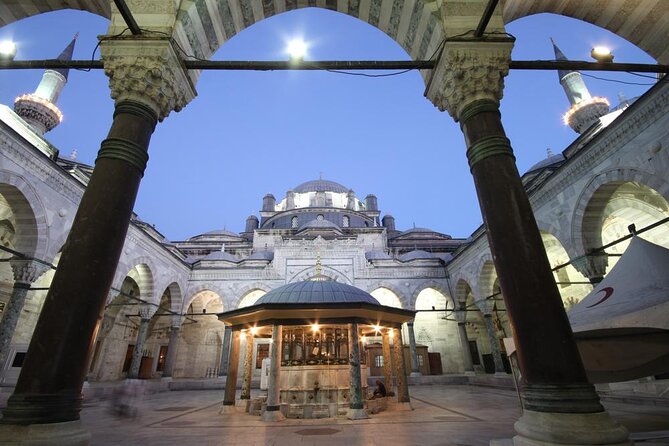
Today, the mosque remains an active place of worship. It fosters a sense of continuity and connection to its historic roots. The call to prayer, amplified through its acoustics, reverberates across Beyazıt Square, a daily reminder of faith that binds its community.
Beyazıt Mosque also plays a part in cultural exchange. Its location and significance attract tourists and locals alike. It stands as a symbol of Istanbul’s rich cultural tapestry, fostering dialogue and understanding across diverse groups.
A Journey Through Time: The Mosque’s Restoration and Preservation
Beyazıt Mosque has withstood the test of time, thanks to careful restoration efforts. It has survived numerous earthquakes that have rocked Istanbul over the centuries. Each restoration has aimed to preserve its historical integrity while making necessary safety improvements.
Restoration works have included structural strengthening and aesthetic preservation. The mosque’s intricate stonework and precious Iznik tiles have been skillfully maintained. These efforts ensure that its architectural beauty continues to shine through.
The mosque’s preservation highlights the dedication to safeguarding Istanbul’s cultural heritage. Various cultural organizations have supported these projects. Their involvement underscores the mosque’s significance both locally and internationally.
Visitors can appreciate the meticulous craftsmanship involved in the mosque’s maintenance. This attention to detail enhances the visitor experience, allowing people to engage with its rich history. Guided tours often delve into the stories of these restorative efforts.
These ongoing preservation works allow Beyazıt Mosque to continue serving its community. As it stands today, the mosque is a testament to Istanbul’s enduring spirit and historical resilience. Efforts to maintain it show a commitment to cultural continuity and appreciation.
Beyazıt Square: The Heartbeat of Istanbul’s Historic Peninsula
Beyazıt Square holds a central place in Istanbul’s historic fabric. It is situated just a stone’s throw away from Beyazıt Mosque. The square is a lively hub, weaving together threads of the city’s past and present.
In Byzantine times, the area was the site of the Forum of Theodosius. Over centuries, it has transformed into a vibrant social and cultural space. Today, visitors can sense echoes of history intertwined with the buzz of modern-day life.
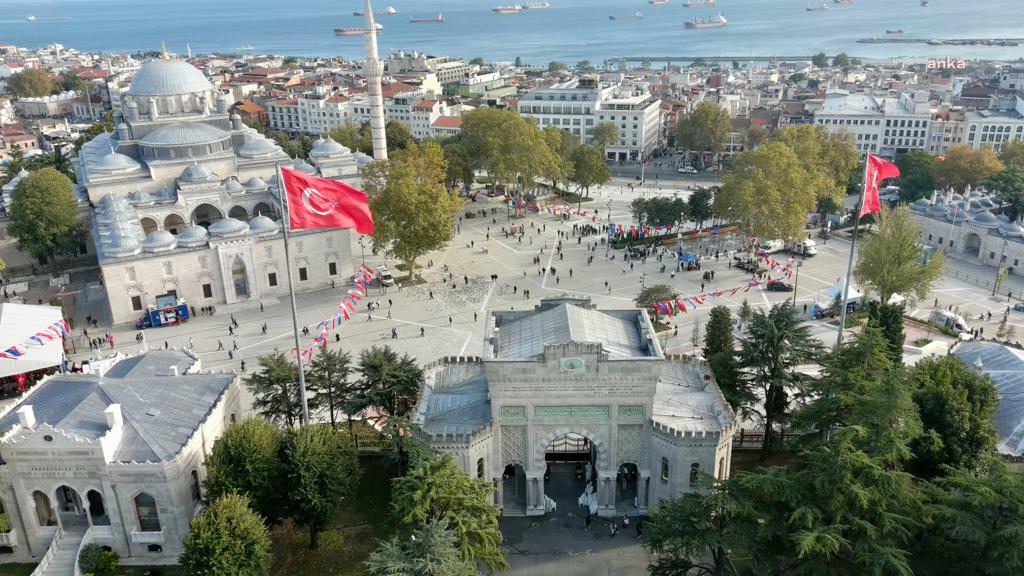
At the heart of the square stands the iconic Beyazıt Tower. This stone sentinel offers panoramic views, granting a unique perspective of Istanbul’s skyline. The tower serves as both a landmark and a reminder of the city’s enduring charm.
Beyazıt Square is more than just a crossroads; it’s a gathering place where stories unfold daily. Locals and tourists alike find the square a convenient meeting spot amid their city explorations. It hosts various events, drawing crowds with its energetic vibe.
Surrounded by notable landmarks, the square acts as a gateway to deeper historical exploration. The bustling atmosphere contrasts with moments of tranquil reflection at nearby historical sites. Visitors often begin their journeys here before delving into Istanbul’s rich history.
The Grand Bazaar: A Stone’s Throw from Beyazıt Mosque
Just beyond the majestic walls of Beyazıt Mosque lies one of Istanbul’s true gems: the Grand Bazaar. This sprawling network of shops and stalls is among the oldest and largest covered markets in the world. Its proximity to the mosque makes it an irresistible stop for visitors seeking both spirituality and commerce.
Wandering through the labyrinthine alleys of the bazaar can feel like stepping back in time. Each corner reveals shops brimming with vibrant textiles, intricate jewelry, and fragrant spices. The bazaar has been enchanting traders and tourists alike since the mid-15th century.

The Grand Bazaar is not just a place to purchase goods; it’s an experience of Istanbul’s bustling trade culture. Vendors here are as much a part of the attraction as the items they sell, inviting you to sample and explore. Haggling is a tradition, adding a lively element to the shopping encounter.
The ambiance within the bazaar is a sensory delight. The smell of freshly brewed Turkish coffee mingles with the aroma of leather and perfumes. The chatter of shopkeepers merges with the rustle of passerby, creating a unique symphony that is distinctly Istanbul.
After visiting Beyazıt Mosque, a trip to the Grand Bazaar offers a perfect chance to unwind and explore at a leisurely pace. Shoppers can search for treasures or simply soak in the vibrant atmosphere. This close-knit relationship between the mosque and the market highlights Istanbul’s seamless blend of past and present.
Practical Information for Visitors: Timings, Dress Code, and Etiquette
Visiting Beyazıt Mosque is a highlight in Istanbul, but it’s crucial to plan properly. The mosque welcomes visitors daily, though it’s essential to check specific timings, as they can vary with seasons. Typically, visiting hours align with non-prayer times to ensure the worshipers’ peace.
Dressing modestly is a requirement when visiting Beyazıt Mosque to respect Islamic customs. Men should wear long trousers, and women are asked to cover their heads and wear clothing that covers shoulders and knees. Scarves are often available at the mosque entrance for those who require them.
Understanding the etiquette at the mosque enhances your experience and shows respect for the site’s sacredness. Silence is appreciated, and it’s courteous to remove shoes before entering the prayer hall. Remember, the mosque is a place of worship, so discretion is key during your visit.
Here’s a quick list of things to keep in mind:
- Timings: Confirm in advance, as they change seasonally.
- Dress Code: Modest attire; headscarves for women.
- Etiquette: Remain silent, remove shoes, and avoid flash photography.
With these tips in hand, you can fully appreciate the serene beauty of Beyazıt Mosque and its cultural significance. Prepare accordingly to enjoy a respectful and enriching visit.
Experiencing the Serenity: Inside the Prayer Hall of Beyazıt Mosque
Stepping into the prayer hall of Beyazıt Mosque is a journey into tranquility. Visitors are immediately struck by the serene atmosphere enveloping the grand space. The tranquility inside contrasts beautifully with the bustling life outside.
The hall itself is spacious and filled with natural light. Large windows, elegantly designed, allow daylight to flood in, illuminating the intricate details of the interior. The mosque’s design ensures a calm environment, perfect for meditation and reflection.
The prayer hall is a place where history meets art. Its walls are adorned with Iznik tiles, showcasing motifs that have withstood the test of time. These tiles are a testament to the artistry present in Ottoman architecture, drawing admiration from all who enter.
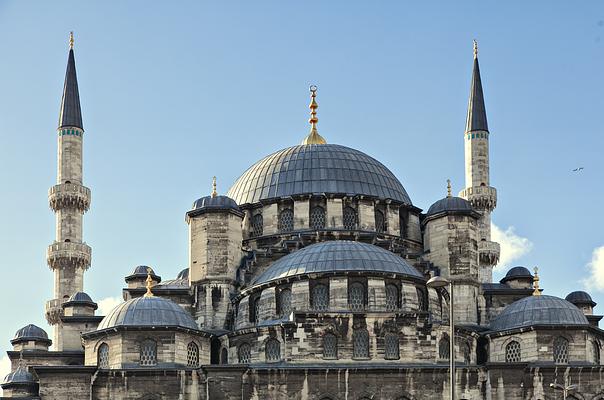
An essential feature of the hall is its acoustics, which are finely tuned to carry the call to prayer. This sophisticated design enhances every sound, from the Imam’s voice to the gentle hum of worshipers in prayer. The acoustic harmony reflects the care and craftsmanship invested in its construction.
Inside the prayer hall, one feels a profound connection to the past. Visitors are encouraged to pause and appreciate the centuries of devotion embodied in its walls. This sacred space invites both reflection and admiration, as it continues to serve as a living testament to Istanbul’s rich spiritual heritage.
The Beyazıt Mosque Complex: More Than Just a Place of Worship
The Beyazıt Mosque complex extends beyond the central mosque, serving various social and educational purposes. This reflects the Ottomans’ holistic vision of community infrastructure. Here, faith, education, and social welfare coexisted harmoniously.
An integral part of the complex is the madrasa. Historically, it was a major learning center where scholars gathered to study and teach. This tradition underscores the mosque’s role in the intellectual and cultural life of its time.
Adjacent to the madrasa stood the imaret, or public kitchen. This facility was crucial in providing meals for the less fortunate. The presence of an imaret highlights the Ottoman commitment to social care, setting a precedent for future social services.
The mosque complex also once included a caravanserai. These inns were vital for traders passing through, ensuring safe rest and commerce. Such facilities emphasized the mosque’s importance as a hub of both spirituality and trade in Istanbul.
Gardens and fountains enrich the complex, offering peaceful retreats. These outdoor spaces complement the mosque’s serenity, inviting contemplation or casual conversation. They exemplify the Ottoman talent for creating serene urban sanctuaries.
Finally, the Beyazıt Library, nestled within the complex, has been a haven for scholars. One of the oldest libraries in Istanbul, it houses a collection of rare and valuable manuscripts. The library signifies the enduring legacy of knowledge and learning that the complex champions.
Through its diverse functions, the Beyazıt Mosque complex stands as a testament to the multifaceted role such structures played in Ottoman society. It continues to be a beacon of cultural and historical importance, enriching both locals and visitors alike.
Beyazıt Mosque in Photos: Capturing the Essence of Istanbul’s Heritage
Photographs of Beyazıt Mosque offer a glimpse into its grandeur and historical significance. With each shot, you capture a different aspect of Ottoman artistry. The mosque’s intricate design elements are a feast for the eyes and the camera lens.
The ornate Iznik tiles inside the mosque are particularly striking. Their colorful patterns reflect intricate Islamic art, creating a visual tapestry. Photos of these tiles preserve their beauty and detail, allowing viewers to appreciate their craftsmanship without visiting in person.
The mosque’s external architectural features also make for captivating photos. The succession of arches and the majestic minaret stand as powerful symbols. The play of light and shadow over these structures highlights their timeless elegance and architectural mastery.
Beyazıt Mosque provides an ideal backdrop for photographers interested in history and architecture. Each photograph taken here serves as a testament to the mosque’s cultural and religious importance. By capturing these images, photographers contribute to preserving the mosque’s legacy, sharing Istanbul’s rich heritage with a wider audience.
Nearby Attractions: Making the Most of Your Visit to Beyazıt Mosque
Beyazıt Mosque is surrounded by a plethora of intriguing sites. Each of these locations adds depth to your exploration of Istanbul’s rich history. Visitors often spend an entire day uncovering these treasures.
Beyazıt Square, adjacent to the mosque, is a vibrant focal point of activity. Historically significant, this square was the site of the Forum of Theodosius in Byzantine times. Today, it’s a lively gathering place for locals and tourists alike.
One cannot miss the legendary Grand Bazaar. Just a stone’s throw from the mosque, it’s one of the world’s oldest and largest covered markets. With thousands of shops, it offers everything from Turkish carpets to intricate jewelry.
For those interested in education and culture, the Istanbul University campus is nearby. Strolling through the campus reveals stunning Ottoman-era architecture. It’s also a great place to relax and take in the bustling atmosphere.
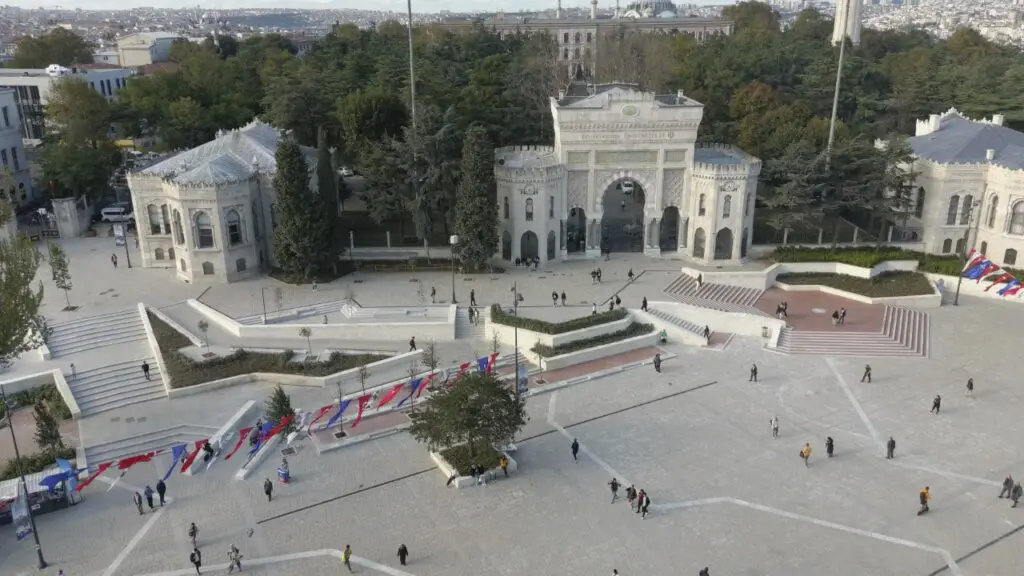
Consider these nearby attractions when planning your visit to maximize your experience:
- Beyazıt Square: A historic and lively public space.
- Grand Bazaar: A vast, vibrant market offering a diverse shopping experience.
- Istanbul University: A beautiful campus with rich architectural and academic history.
These sites, together with Beyazıt Mosque, provide a comprehensive view of Istanbul’s historical and cultural tapestry. Your journey becomes more enriching as you connect with the city’s layered heritage.
Tips for Travelers: Best Times to Visit and How to Get There
Beyazıt Mosque, nestled in the heart of Istanbul, attracts visitors throughout the year. Timing your visit can enhance your experience. The mosque sees fewer crowds early in the morning and later in the afternoon. These times allow for a more peaceful exploration without throngs of tourists.
The climate in Istanbul is most pleasant during spring and autumn. Hence, visiting during these seasons provides mild weather and vibrant city life. Avoiding summer not only evades the intense heat but also the peak tourist influx.
Reaching Beyazıt Mosque is convenient thanks to Istanbul’s extensive public transportation network. The tram is one of the most efficient options. Taking the T1 line to Beyazıt-Kapalıçarşı stop places you minutes away from the mosque’s gates. Buses also serve the area, with several routes passing through Beyazıt Square.
To ensure a smooth and memorable visit, keep these travel tips in mind:
- Best Times to Visit: Early morning or late afternoon, preferably in spring or autumn.
- Transportation: Use the T1 tram or bus to Beyazıt-Kapalıçarşı stop.
- Walking: Wear comfortable shoes as the area is best explored on foot.
These strategies will make your journey to Beyazıt Mosque seamless, allowing you to fully immerse yourself in its historical charm.
Reflections and Insights: Visitor Experiences at Beyazıt Mosque
Visitors to Beyazıt Mosque often share inspiring reflections about their experiences. The mosque’s serene atmosphere provides a profound sense of peace. Many find the tranquil setting a refreshing escape from Istanbul’s busy streets.
The architectural splendor of Beyazıt Mosque leaves a lasting impression. Guests marvel at the intricate designs and harmonious proportions. The mosque’s unique blend of Byzantine and Ottoman elements captivates architecture enthusiasts.
Worshippers and visitors alike appreciate the mosque’s spiritual ambiance. During prayer times, the soothing call to prayer echoes beautifully within the walls. This evokes a deep respect for the mosque’s cultural and religious significance.
Travelers often mention the welcoming atmosphere at Beyazıt Mosque. Non-Muslim visitors feel at ease exploring outside prayer hours. The respectful interactions highlight Istanbul’s rich tradition of hospitality and multiculturalism. This makes Beyazıt Mosque a memorable stop in any traveler’s journey through the city.
Conclusion: The Enduring Legacy of Beyazıt Mosque
Beyazıt Mosque stands as a monument to Istanbul’s rich history and diverse cultural heritage. Its enduring legacy reflects the city’s historical layers, from Byzantine roots to the heights of the Ottoman Empire. Visitors and locals alike cherish it as a symbol of architectural beauty and spiritual significance.
The mosque’s influence extends beyond its walls. It continues to inspire admiration for Ottoman architecture and Islamic artistry. As a witness to centuries of change, Beyazıt Mosque remains a timeless beacon of resilience and unity in Istanbul.
FAQs
1. Where is Beyazıt Mosque located?
Beyazıt Mosque is located in the Beyazıt district of Istanbul, near the Grand Bazaar and Istanbul University.
2. Who built Beyazıt Mosque?
It was commissioned by Ottoman Sultan Bayezid II and built between 1501 and 1506.
3. What is the architectural style of the mosque?
The mosque features early classical Ottoman architecture with some influences from Byzantine design.
4. Is Beyazıt Mosque open to the public?
Yes, the mosque is open to both worshippers and tourists outside of prayer times.
5. Is there an entrance fee?
No, entry to Beyazıt Mosque is free of charge.
6. What are the visiting hours?
The mosque is open daily, typically from early morning until evening, except during prayer times.
7. What should visitors wear?
Modest dress is required. Women should cover their hair, and everyone should cover shoulders and knees.
8. Are guided tours available?
Guided tours may not be offered on-site but can be arranged through local tour operators.
9. What makes Beyazıt Mosque special?
It is one of the oldest imperial mosques in Istanbul and sits in a vibrant historic area.
10. Is the mosque near other tourist attractions?
Yes, it’s close to the Grand Bazaar, Istanbul University, and the Süleymaniye Mosque.

